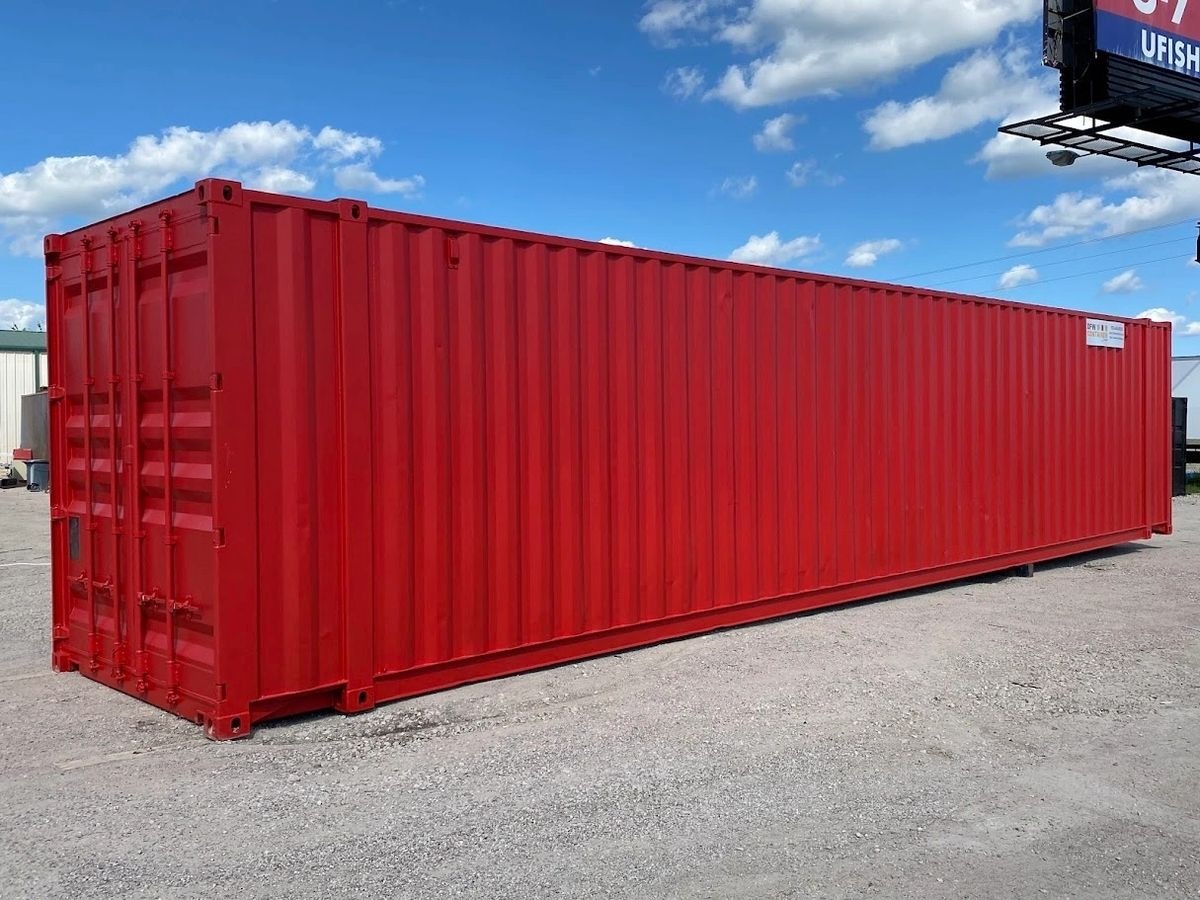20 Reasons To Believe Shipping Containers Will Never Be Forgotten

The Versatile World of Shipping Containers: More Than Just Cargo Carriers
Shipping containers are frequently viewed as ordinary metal boxes that facilitate global trade. However, their versatility extends far beyond carrying items across oceans. From ingenious housing solutions to pop-up shops and even art setups, shipping containers are changing various industries. This blog post checks out the complex applications of shipping containers, providing insights into their usage, advantages, and the future potential they hold.
The Basics of Shipping Containers
Shipping containers were developed in the mid-20th century to simplify worldwide shipping. Readily available in standard sizes-- most commonly 20-foot and 40-foot-- they have ended up being the backbone of worldwide trade.
Table 1: Common Shipping Container Dimensions
| Container Type | Length (feet) | Width (feet) | Height (ft) | Typical Volume (cu feet) |
|---|---|---|---|---|
| Standard | 20 | 8 | 8.5 | 1,169 |
| High Cube | 40 | 8 | 9.5 | 2,694 |
| Basic | 40 | 8 | 8.5 | 2,390 |
| High Cube | 20 | 8 | 9.5 | 1,350 |
These dimensions make them ideal for various uses aside from conventional shipping.
Diverse Applications of Shipping Containers
1. Housing and Modular Construction
One of the most exciting developments in shipping container usage is their adjustment for housing. cogcontainersltd.com , resilient, and relatively affordable, they provide unique solutions to the housing crisis.
- Cost: Compared to traditional structure methods, constructing homes with shipping containers can lower costs by 20-30%.
- Sustainability: By recycling old containers, contractors can produce low-impact homes that reduce waste.
- Speed of Construction: Container homes can be developed quickly, frequently within weeks, thanks to their modular nature.
List of Container Home Features
- Energy efficiency (photovoltaic panels, effective insulation)
- Customizability (floor plans, designs)
- Mobility (quickly transferred)
- Resilience (long lasting under extreme weather condition)
2. Retail and Pop-Up Shops
Shipping containers are becoming increasingly popular as retail spaces. They can be changed into pop-up stores, food stalls, and even long-term retail stores. This trend is particularly noted in metropolitan locations where area is valuable.
- Versatility: They can be positioned essentially anywhere, targeting high-traffic areas.
- Branding: Unique container designs can improve a brand's image, bring in consumers.
- Cost-effectiveness: Lower overhead costs make it much easier for small services to go into the market.
Table 2: Advantages of Shipping Containers in Retail
| Benefit | Explanation |
|---|---|
| Lower rental costs | Cheaper than traditional retail areas |
| Short setup time | Quick installation permits quick entry |
| Modification alternatives | Easy to modify for branding needs |
| Environmentally friendly option | Utilizes recycled materials |
3. Disaster Relief and Emergency Shelters
In times of natural disasters, shipping containers are progressively used as temporary shelters. Their sturdiness and weather condition resistance make them appropriate for rapid implementation in crisis circumstances.
- Quick Deployment: Containers can be transferred to affected locations rapidly.
- Durable: Designed to withstand extreme conditions, they offer trustworthy shelter.
- Adjustable: Can be modified into numerous kinds of accommodations, from single systems to larger community centers.
4. Art Installations and Creative Spaces
Artists have started using shipping containers as canvases and galleries. Their unique sizes and shapes influence innovative installations, making them a stylish choice in public and personal art tasks.
List of Artistic Applications
- Interactive art installations
- Gallery spaces for exhibits
- Performance places
- Mobile art studios
Shipping Containers: A Sustainable Choice
The shift towards sustainability can not be overlooked. Making use of shipping containers motivates recycling and adaptive reuse, helping to lower the carbon footprint connected with traditional building products. Additionally, numerous container homes and organizations highlight energy performance through making use of green innovations.
Table 3: Environmental Benefits of Using Shipping Containers
| Advantage | Description |
|---|---|
| Decreased Waste | Recycling old containers decreases land fill usage |
| Lower Energy Consumption | Many styles focus on environment-friendly practices |
| Minimal Resource Use | Requires less new materials compared to standard builds |
FAQs about Shipping Containers
Q1: Can shipping containers be used for long-lasting housing?
A1: Yes, lots of housing projects utilize shipping containers as long-lasting houses, specifically in regions facing housing lacks.
Q2: How do shipping containers hold up versus extreme weather?
A2: Shipping containers are created to stand up to harsh marine conditions, making them resistant against extreme weather condition events.
Q3: Are shipping containers safe to use?
A3: Yes, effectively modified shipping containers fulfill building codes and security requirements. It's necessary to consult with experts throughout the modification process.
Q4: What are the expenses related to purchasing and customizing a shipping container?
A4: The cost can vary commonly depending on size, condition, and modifications however generally ranges from ₤ 1,500 to ₤ 5,000 for the container itself, with extra expenses for modification that can go beyond the initial purchase price.
Q5: Where can I buy shipping containers?
A5: Shipping containers can be bought from specialized dealerships, shipping companies, or online marketplaces.
The Future of Shipping Containers
As the world continues to accept sustainability and ingenious solutions, the prospective applications of shipping containers will only grow. Designers, entrepreneurs, and neighborhoods are continually finding new ways to repurpose these once purely utilitarian items.
Shipping containers are not just vessels for transferring items; they are transforming living and working spaces, fostering imagination, and leading the way for a more sustainable future. As we continue to establish these solutions, the modest shipping container may effectively end up being a symbol of development in the 21st century.

